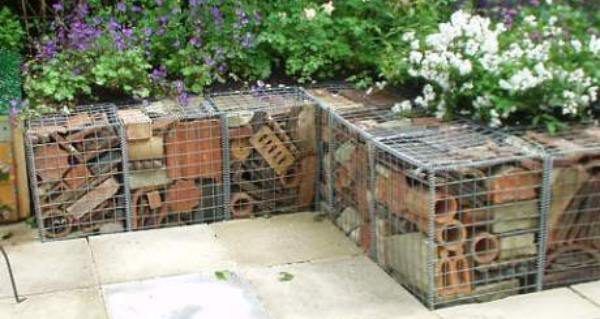Affordable Gabion Filling Strategies for Lasting Structures

Explore cost-effective gabion filling methods that won't break the bank. Discover how to use local materials and innovative solutions for your gabion projects. The cheapest way to fill a gabion will often depend on the readily available materials in your local area. Here are some commonly used, cost-effective options:
Local Stone:
Local stones are a cost-effective option for filling gabions because they typically require less transportation, significantly reducing costs associated with fuel and logistics. Sourcing stone from nearby quarries or natural deposits eliminates the need for long-haul shipping, lowering expenses and reducing the carbon footprint, making it an environmentally sustainable choice. Additionally, using local stones ensures that the materials are readily available and can be easily replaced or supplemented if needed, further enhancing cost-efficiency and convenience for construction and landscaping projects.
Recycled Materials:
Recycled materials are an excellent alternative as fill material for gabions for several reasons. They are often less expensive than new materials because they are repurposed from waste products, such as construction debris, which would otherwise require disposal. This repurposing also supports sustainability by reducing landfill waste and the energy consumption associated with manufacturing new materials. Moreover, recycled materials like crushed concrete or broken bricks can provide the same structural support as new materials. One can contribute to a circular economy by choosing recycled fillers, reinforcing environmental responsibility while maintaining the integrity of the gabion structures.
Quarry by-products:
Quarry by-products are an excellent alternative to gabion fillers due to their cost-effectiveness and availability. These by-products, often regarded as waste, include quarry dust, chips, and overburden that are readily available at a fraction of the cost of prime quarry stone. Using these materials provides a use for what would otherwise be discarded, reduces quarry waste, and significantly reduces material costs. They can be particularly suitable for the internal layers of gabions, where aesthetics are less critical, utilizing robust, durable materials without incurring the higher expense of more refined stone products.
Non-decorative fill materials:
Non-decorative fill materials are an ideal alternative for gabion baskets because they are generally more affordable than decorative stones. Such materials, including quarry leftovers, recycled concrete, or rubble, can be effective for structural purposes but come at a lower cost. For gabions that serve a functional purpose rather than an aesthetic one, like erosion control or retaining walls, the appearance of the fill material is less important. This allows for using less expensive, non-decorative options without compromising the functionality of the gabion structures. Additionally, a layer of decorative stone can be placed on the exterior for partially visible gabions for visual appeal. At the same time, the bulk of the basket is filled with cheaper material, combining cost savings with an attractive finish.
Rubble:
Rubble is a cost-effective fill material for gabions, primarily due to its accessibility and reduced processing costs. It is often sourced from construction and demolition waste, which would otherwise require landfill disposal. By repurposing this rubble, disposal costs are avoided, and the material is obtained at a lower price, if not for free. Rubble processing into a usable form for gabions, such as breaking down larger pieces into smaller, manageable sizes, is minimal compared to the extraction and transportation costs of new materials. Therefore, using rubble as fill reduces overall construction expenses while promoting recycling and sustainable practices.
Earth-filled material:
Earth-filled gabions can be suitable for specific projects, offering a very economical alternative. Earth is often readily available on-site, eliminating the need for transportation and the associated costs. Additionally, using earth fill can integrate the gabion structure more naturally into the surrounding landscape, as the fill material is consistent with the local environment. However, it's important to note that earth-filled gabions are generally less durable or structurally sound than those filled with stone, particularly in wet conditions. They are best used in applications where water drainage is not a critical issue and the additional structural strength of the stone is optional.
How many stones does it take to fill a gabion?
The number of stones required to fill a gabion depends on several factors, including the size of the gabion basket and the size of the stones used. To calculate the number of stones needed, you would first determine the volume of the gabion basket (length x width x height). Once the volume is known, you can estimate the amount of stone needed to fill that volume.
For example, if the stones are relatively uniform, they can pack them tightly, reducing the void space. However, natural stones often vary in size, which increases the null space and thus requires more stones to fill the same volume. The standard practice assumes that the void space will take up approximately 30–50% of the gabion volume, depending on the stone's size and shape.
For an accurate estimate, it's best to consult with a supplier or use a gabion stone calculator, which considers the specific dimensions and recommended fill material for your project.
What is the density of gabion fill?
The density of gabion fill can vary widely depending on the type of material used. Typical stone or rock fill for gabions has a density ranging from 1.5 to 3 tons per cubic meter (93 to 187 pounds per cubic foot). The specific gravity of the stone and the amount of void space between the rocks will influence the overall density. For instance, lighter materials like volcanic rocks will have a lower density, while denser materials like granite or limestone will have a higher density. When planning a gabion project, it's essential to consult with material suppliers for precise density values based on the selected fill material.
Conclusion:
To minimize costs, you should also consider the transportation distance, the availability of materials, the labor required to fill the gabions, and any equipment needed for the job. It’s always a good idea to compare prices from different suppliers and consider the long-term durability of the fill material to ensure it’s cost-effective in the long run.
